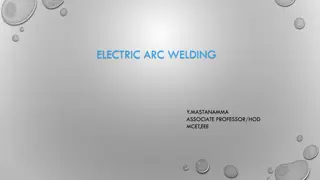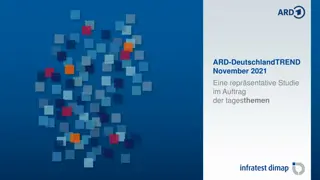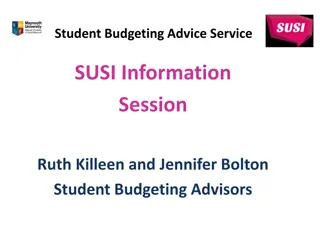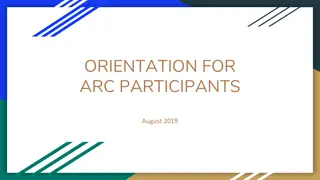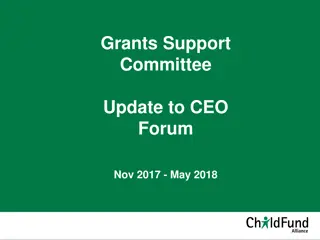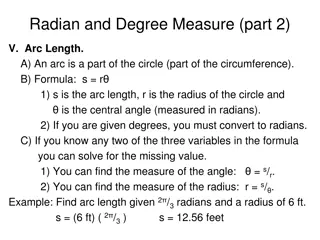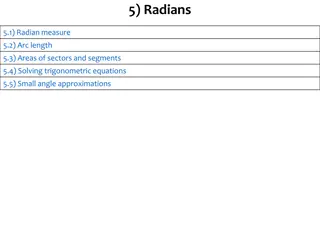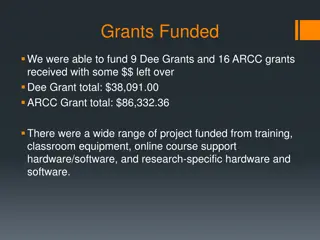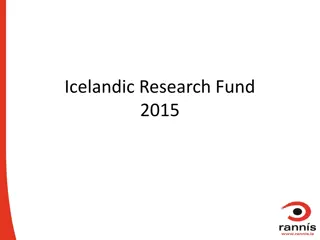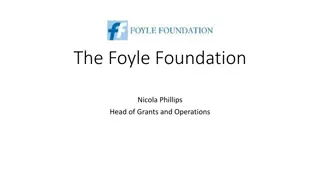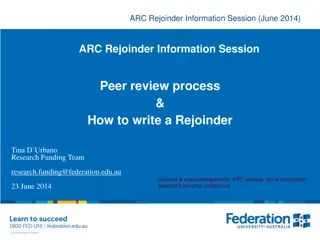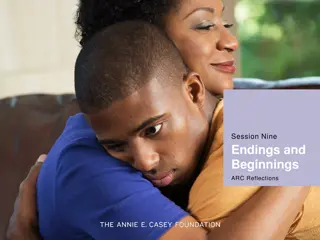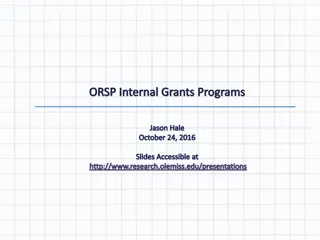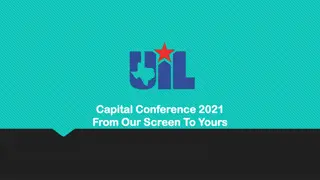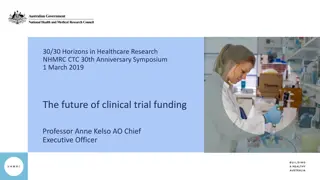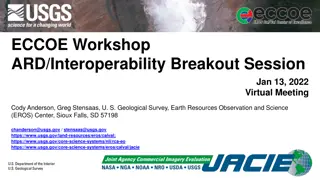
Writing Successful Research Grants: Tips and Strategies
Learn how to write successful research grant proposals for applied and clinical research projects. Discover valuable tips on finding the right funding mechanism, formatting your application, and structuring your research strategy effectively. Take advantage of opportunities like Clinical Seed Grants and Clinical Project Grants. Application deadline is August 31st, 2021, so start planning early!
Download Presentation

Please find below an Image/Link to download the presentation.
The content on the website is provided AS IS for your information and personal use only. It may not be sold, licensed, or shared on other websites without obtaining consent from the author. If you encounter any issues during the download, it is possible that the publisher has removed the file from their server.
You are allowed to download the files provided on this website for personal or commercial use, subject to the condition that they are used lawfully. All files are the property of their respective owners.
The content on the website is provided AS IS for your information and personal use only. It may not be sold, licensed, or shared on other websites without obtaining consent from the author.
E N D
Presentation Transcript
WRITING A SUCCESSFUL RESEARCH GRANT ARC Applied Research Didactic July 16, 2021
Clinical Research Grants CLINICAL SEED GRANT Direct costs of up to $5,000 Up to 10 Clinical Seed Grants will be awarded each year, with emphasis on funding applications across all clinical divisions. CLINICAL PROJECT GRANT Direct costs of up to $25,000 Up to 2 Clinical Project Grants will be awarded each year.
Application Deadline: August 31st, 2021 5:00 PM EST Please visit the ARC website for more information on eligibility and to apply: www.mghanesthesiaresearch.com/grants
General Tips| Formatting Find the right mechanism & start planning early Contact the appropriate program staff early for DACCPM grants contact ARC Read the Request for Applications (RFA) thoroughly and tailor your application to any specifics Follow the directions! Don t use first or second person nouns (I, we, you) Create clear section headings and breaks in the writing Consider incorporating well designed flow diagrams, charts, figures Edit, edit, edit.
General Format | Research Strategy Specific Aims a statement of your objectives for the project. Frequently start with terms like to evaluate , describe , identify . Research Strategy an expanded description of the rationale for your research and your experiments In larger grants (e.g. NIH R01) these will be split into separate documents, however the DACCPM grants combine these items Though how you organize your application is largely up to you, the research strategy typically includes the following sections: Significance Innovation Approach Subheading for Preliminary Studies
Research Strategy | DACCPM Seed Grant Approach Significance & Background Indicate what problem this will address. Describe the impact the study will have. Include information about study design Interventions or exposures Outcomes and measures Risks and benefits Specific Aims & Innovation Statistical analysis / sample size Preliminary Studies Summary / Impact Statement TIPS & TRICKS Be concise, especially for shorter grants Avoid duplication across sections, unless you want/need to emphasize something
Research Strategy | DACCPM Project Grant Approach: Outcomes Innovation Career Significance, Background & Rationale Development & Future Work Approach: Experiments / Interventions Preliminary Studies Statistical Analysis Threats to Project Summary / Impact Statement Approach: Design Specific Aims Timeline TIPS & TRICKS Act as though the reviewers are not experts Ensure you provide enough information so they can be introduced to the problem. Explain design elements in detail, including how you will operationalize the outcomes and measures Describe threats to the project and how you plan to mitigate this (if possible)
Budget The DACCPM Clinical Research Grants uses a detailed budget with categories for: Equipment Patient Care Costs Materials and Supplies Consultant Services Other Expenses Appropriate funds should be requested based on the research needs. Awards are not intended to support salaries or to buy non-clinical time.
Grant Format | DACCPM Budget Justification Even though effort is not requested, a brief description of the key and other personnel should be described BUDGET JUSTIFICATION Key Personnel PI NAME, M.D, Principal Investigator, is the INSERT TITLE of Anaesthesia at Harvard Medical School and INSERT ROLE in the Department of Anesthesia, Critical Care and Pain Medicine at Massachusetts General Hospital. Dr. PI NAME research interests include NAME RESEARCH INTERESTS. In the proposed study Dr. PI NAME will be responsible for NAME STUDY SPECIFIC ROLES and have primary oversight responsibility for the all scientific, administrative, and financial aspects of this project. Other Personnel TBN, Clinical Research Coordinator will work closely with Dr. PI NAME to coordinate all study activities. This CRC will participate NAME STUDY SPECIFIC TASKS. For each item where funds are requested, include a brief sentence or two describing: how the cost was calculated why the item is required to achieve the study aims TBN, Biostatistician will contribute to all aspects of data analysis, interpretation and results reporting. S/he will INSERT STUDY SPECIFIC RESPONSIBILITIES, in close collaboration with Drs. PI NAME and COLLABORATOR NAME. TIPS & TRICKS For DACCPM grants, the more specific the better - you may be requested to justify this during the JIT requests: Patient Care Costs: Using a quote from the MGH Clinical Trials Pharmacy, we are requesting a total of $242.71 per patient for the costs of IV acetaminophen, and $21.20 for the cost of packaging the blinded placebo materials.
Grant Format | Biosketch Maximum Length: 5 Pages Sections: Profile Information: name, eRA Commons user name, title, education and training Personal Statement Positions, Scientific Appointments and Honors Contributions to Science https://grants.nih.gov/grants/forms/biosketch.htm
Biosketch | Personal Statement TIPS & TRICKS Customize your personal statement to the particular project Briefly describe why you are well- suited for your role(s) in this project: training, previous work on this/related topics, technical expertise, environment Optional: You may cite up to four publications that highlight your experience and qualifications
Biosketch | Contribution to Science Describe 5 distinct contributions Be sure to frame the problem, the central findings, the impact of the findings and your specific role Cite up to four relevant publications for each contribution TIPS & TRICKS Identify the most relevant contributions to the proposed project and put them first Group similar items into themes (e.g. Cardiac surgical outcomes ) Use the biosketch to emphasize your experience in relation to the proposed study
Where Grants Go Wrong | What Not to Do Application is too ambitious Roles: It is unclear to reviewers what role this project plays in your trajectory as a researcher Expect too much of the reader Its controversial and you don t adequately address the controversy There isn t any data to date to support the idea No power calculation / inadequate statistical details Committing resources that are not yours to commit Submitting an application that is sloppy or full of typographical errors
Questions? thoule1@mgh.harvard.edu almueller@mgh.harvard.edu (617-726-9252) www.mghanesthesiaresearch.com/grants

